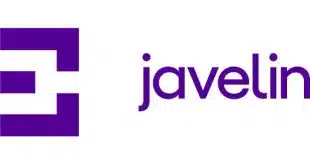ProPay Inc. this week announced a mobile-payments product that lets consumers communicate with as well as pay merchants from a smart phone whether they are in the store or just nearby. The application, which ProPay calls Zumogo, works with a handful of restaurants in the company’s home state of Utah, though officials say they are in the midst of a regional rollout to other Mountain states and plan to have the app available nationally within a year.
The new app, which is free to consumers, lets a smart phone user bring up a list of all participating merchants in his vicinity. With the app’s “announce” button, the user can send and receive text messages to and from those merchants and order and pay for products for pick up later. In this way, Zumogo “marries the best of social media and secure payments,” says Chris Mark, executive vice president of emerging markets at Lehi, Utah-based ProPay, an independent sales organization with 400,000 active merchants that will be prime prospects for Zumogo acceptance.
The application also plays a role similar to that of near-field communication (NFC), an interactive, contactless technology that lets handset users pay for products at the point of sale. But while NFC requires merchants to install readers and users to hold their phones in close proximity to those readers, the Zumogo app works anywhere in our outside the store. “We view this as complementary to NFC,” says Mark.
The app differs from NFC also in that it does not store a consumer’s e-wallet anywhere on the mobile phone. First-time users of the app can enter credit card, debit card, and checking-account data for upload to ProPay’s servers via a Secure Sockets Layer (SSL) connection. In this way, Zumogo leverages a ProPay platform, called ProtectPay, that includes tokenization and end-to-end encryption technology. ProPay introduced ProtectPay two years ago and last spring extended it to include automated clearing house data.
After uploading his payment data, the user selects which account he wants to pay from, and ProPay processes the transaction. Merchants pay card-not-present interchange on card transactions plus a monthly service fee, which ProPay is still testing. Versions of the app are available for phones running Google Inc.’s Android and Apple Inc.’s iOS operating systems, and ProPay is working on a version for Microsoft Corp.’s Windows 7 mobile-phone software.
Early reaction to the app has been highly positive, ProPay officials say. The company tested the product at the Sundance Film Festival, held over 10 days last month in Park City, Utah. Four local restaurants, including a 4-star establishment and a pizza shop, participated. “We had an overwhelming response in terms of the number of people who downloaded the app and did transactions,” says Heather Mark, senior vice president of market strategies at ProPay.
ProPay started with restaurants because it felt Zumogo could solve some nagging problems, including the number of trips servers must make to a table to deliver a bill, take a credit card, process the card, and return the card to the table. But Chris Mark says the app is intended for nearly all merchant types. “At the most basic level, the only requirement of the merchant is to have a browser,” he says.
Todd Ablowitz, a mobile-payments consultant in Centennial, Colo., says in an e-mail message that “anyone can offer a ‘check-in’ style offer—and Foursquare, Yelp, and others are doing so—[but Zumogo] is actually solving a big payment problem for these merchants.” Still, he says, merchants must be convinced the ability to communicate with customers, along with the app’s other features, is worth the added cost of card-not-present transactions, to which the card networks attach an interchange premium. NFC transactions, by contrast, process at lower card-present rates.
ProPay says Zumogo’s pricing hasn’t been an issue so far. Merchants see the app bringing them incremental business rather than cannibalizing existing business, Chris Mark says. “Not a single merchant has raised an issue about card-not-present rates,” he notes.
Other issues may emerge now that the company is widening Zumogo’s market. “It seems very compelling, but like all new schemes that require merchant and consumer adoption, it will take time, talent, and plenty of treasure to roll out,” says Ablowitz.




